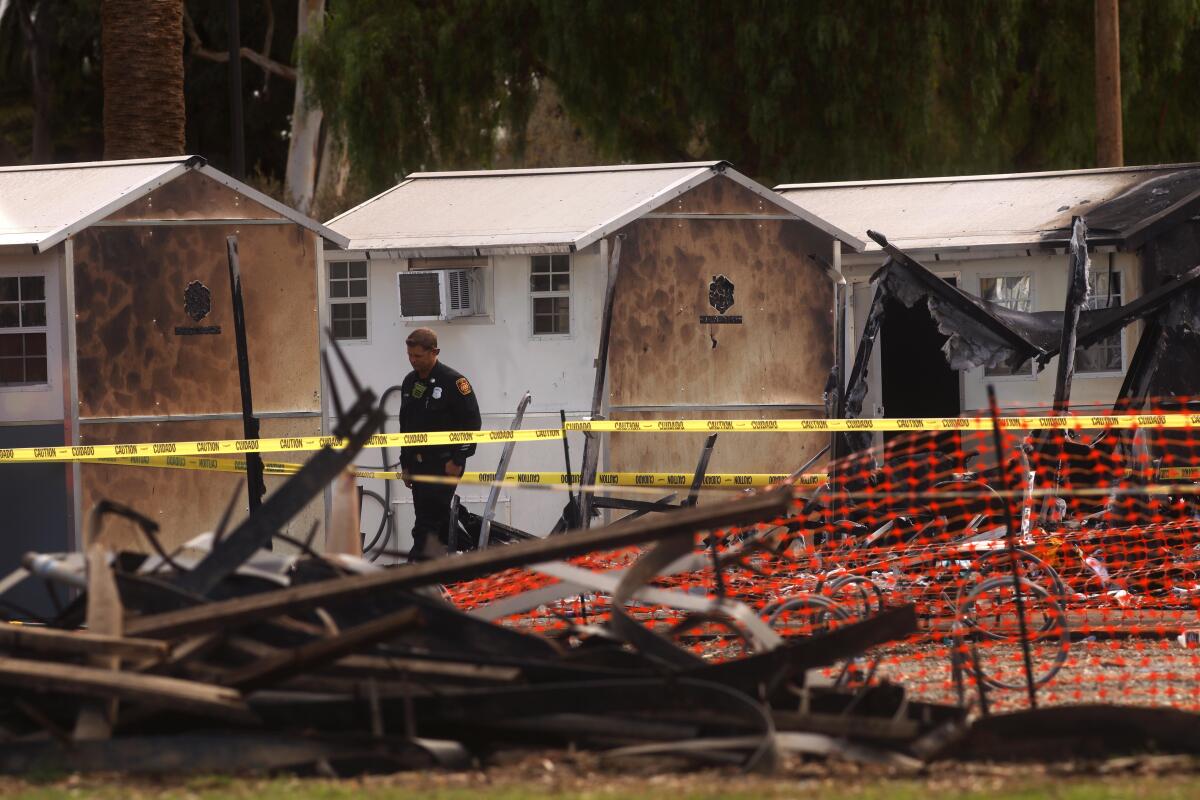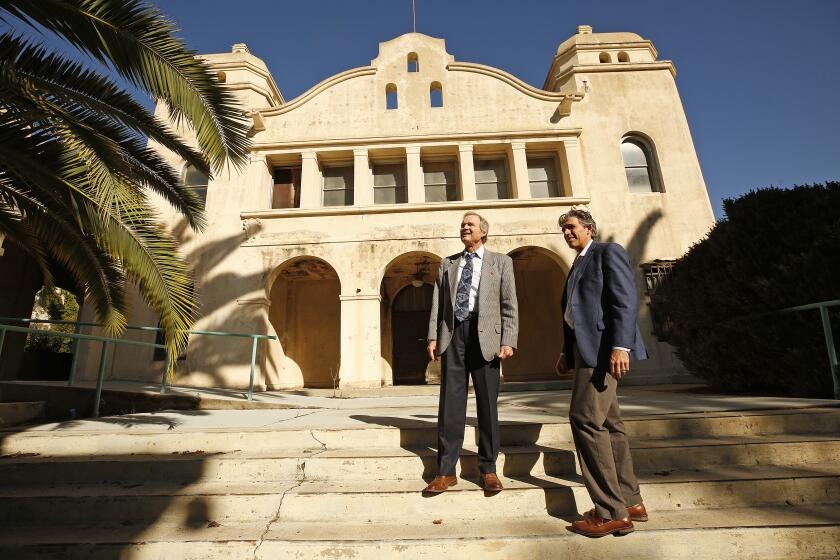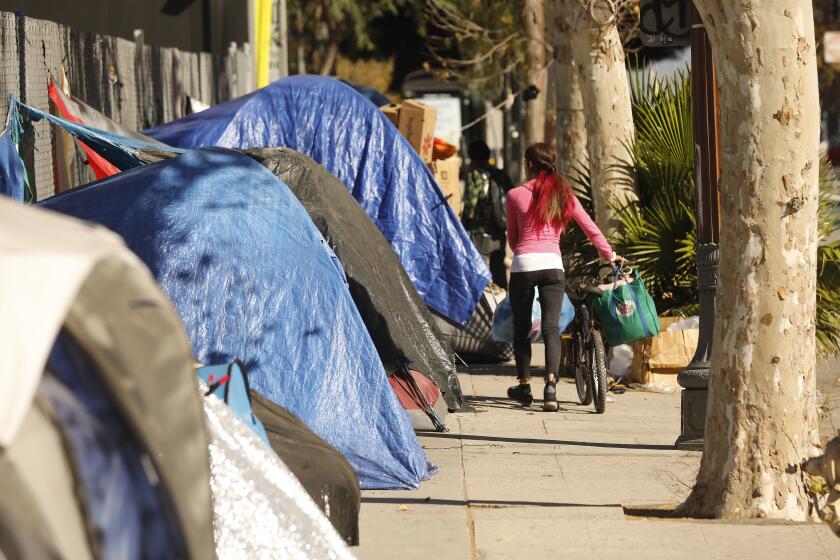Editorial: The VA must do better to house homeless veterans on its West L.A. campus

The Department of Veterans Affairs has failed miserably in its promise to house homeless veterans on the sprawling grounds of its West L.A. campus.
Since the 2015 settlement of a lawsuit by homeless veterans arguing that the VA wasn’t carrying out the original purpose of the 387-acre campus — to offer a home for veterans — there have been draft and updated master plans, the hiring of a consortium of three developers and a promise to provide at least 1,200 units of permanent supportive housing for homeless veterans.
Seven years later, all that effort has resulted in the opening of just 54 units of permanent housing for homeless veterans — housing that was started before the settlement. That’s ridiculously short of the 480 units that the master plan called for by September 2020.
Nothing escapes the bureaucracy of the Department of Veterans Affairs. Its ambitious master plan to create hundreds of units of housing is years behind schedule.
So it’s understandable that there is now another lawsuit filed by 14 homeless veterans in the L.A. area who have no place to live, suffer from various mental or physical disabilities and have no easy way to get to the medical center on the campus. (The National Veterans Foundation is also named as a plaintiff.) The suit demands that the VA create 1,200 homes on the campus in six months and lease an additional 2,500 units in existing apartments within a five-mile radius.
By the last homeless count in Los Angeles County in February, the tally of homeless veterans was 3,456. Even as the number of homeless veterans in the county dropped from 3,902 in 2020 to the current figure, the L.A. area still has the highest number of homeless veterans, according to the lawsuit.
The VA, following a trend in L.A. and other cities, has put up on its grounds more than 100 tiny (64-square-foot) prefabricated shelters. Villages of these homes usually have a central array of toilets and showers. But they have been an inadequate short-term solution, according to plaintiffs who complained of filthy bathrooms and other problems. In September, a fire destroyed 11 of the homes. No one was hurt. (VA officials said they are upgrading their restroom facilities.)
“Even under the VA’s most optimistic and recent plans, thousands of veterans will continue to live and die on the streets of Los Angeles for years to come,” the lawsuit states.
That’s unacceptable.
Homeless numbers rose significantly less in the past two years. Experts say if we want them not to shoot up again, keep tenant protections in place.
VA officials say that nothing is more important than ending veteran homelessness. They can prove that by hustling to catch up with the master plan. The delay, according to the VA and the developers, is attributed to the two years it took to complete an environmental impact report, repair underground utilities and raise the funds the developers needed to start construction.
The developers claim the pace of construction and the opening of units will speed up now that those things are done. For starters, 182 new units are expected to be finished and open for residency by the beginning of next year. Additionally, 380 more units are expected to be under construction by the end of this year. Some have already broken ground. The developers credit Sheila Kuehl, who just left office as an L.A. County supervisor, with helping speed up the development process and the county’s housing authority with helping secure hundreds of housing vouchers intended for veterans from the county that will be attached to the units as rent subsidies.
More units have to be financed and built. We would like to see the VA use some of the revenue that comes to the campus, particularly in the form of leases, for some of the housing construction costs. That could speed things up some.
The prospect for hundreds of additional units in the next few years is promising, but the VA must make housing its biggest priority on that campus. Otherwise, this project will drag on forever while veterans live in tents on sidewalks.
More to Read
A cure for the common opinion
Get thought-provoking perspectives with our weekly newsletter.
You may occasionally receive promotional content from the Los Angeles Times.












